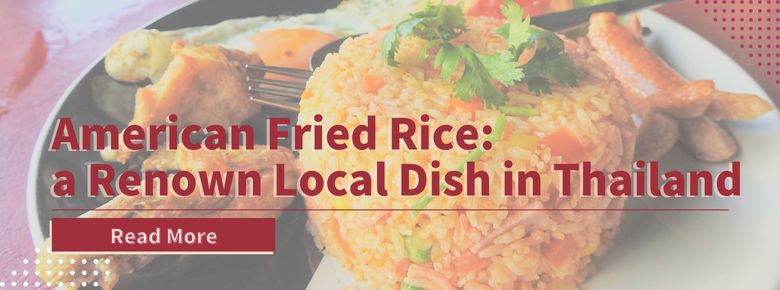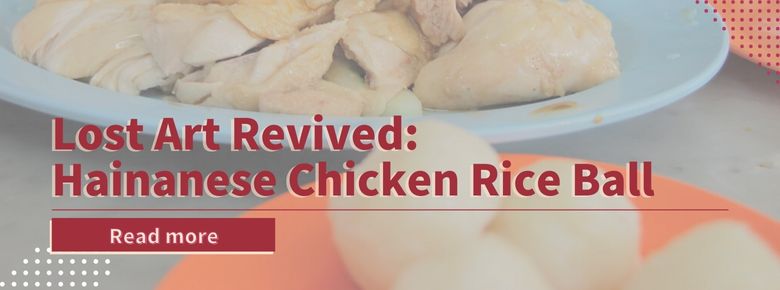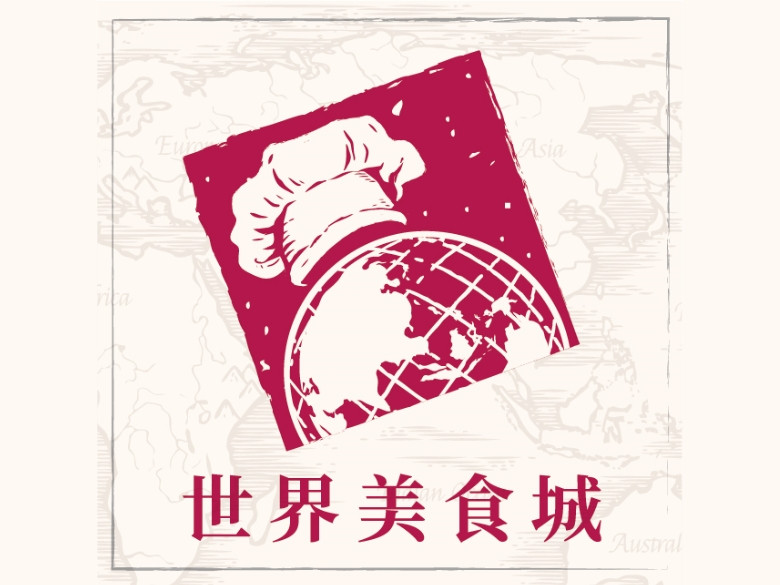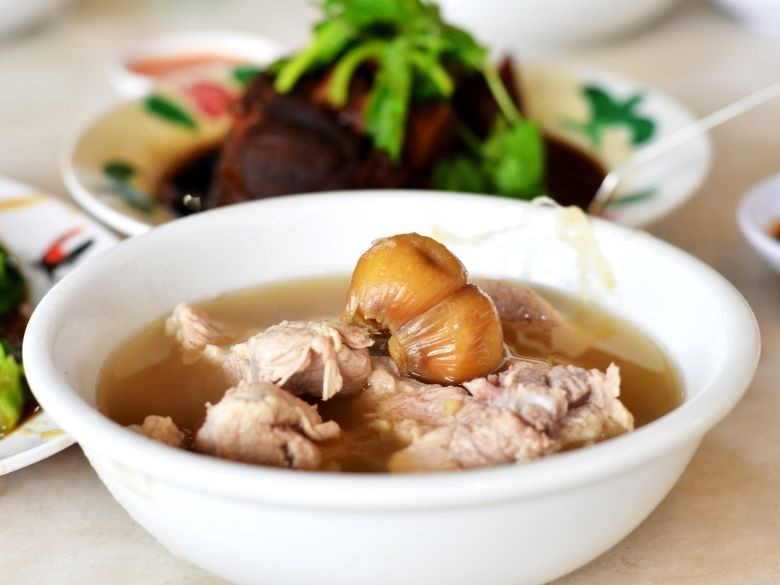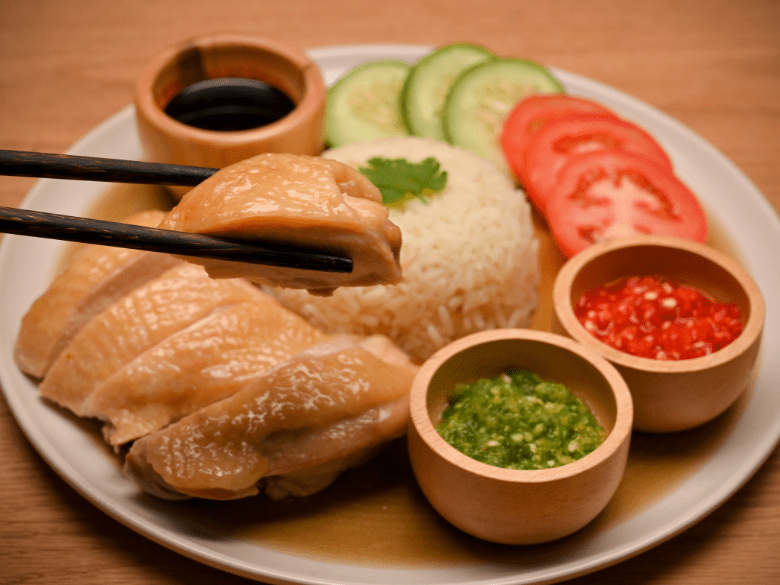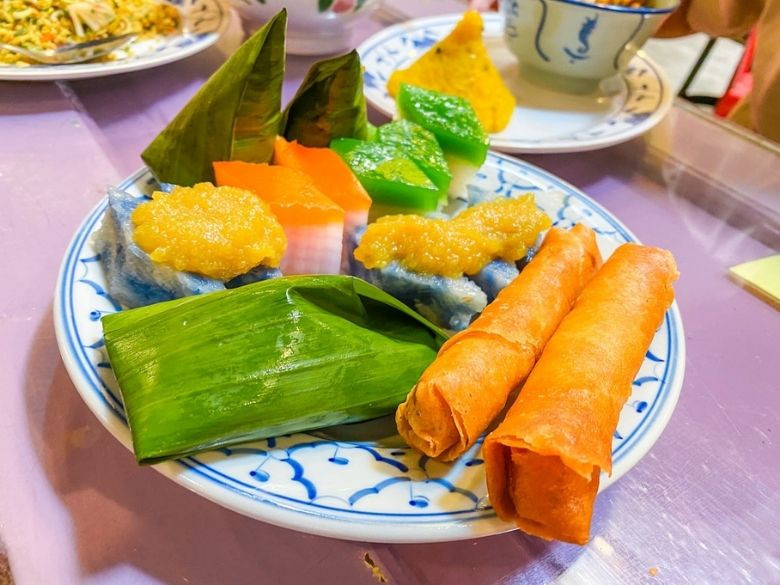What Does “Nasi” Stand for in Malaysian Cuisine?
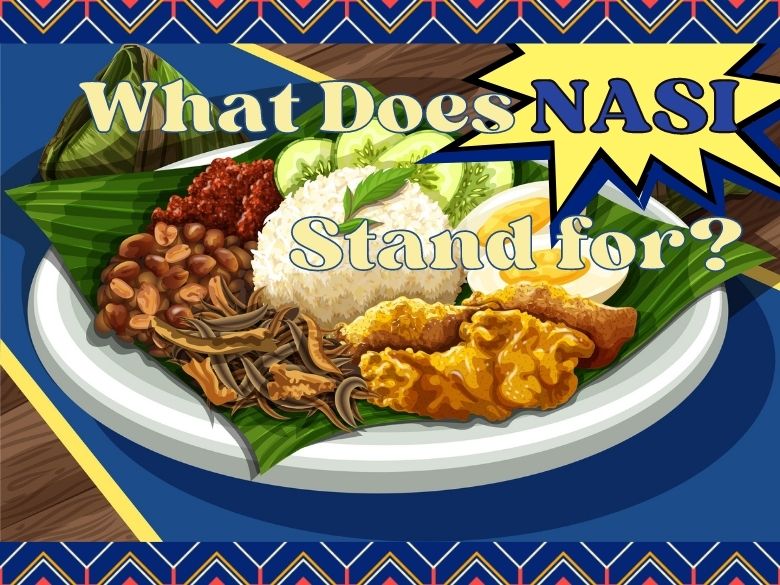
When it comes to Malaysian cuisine, what comes to your mind? It is believed that as long as you have a basic understanding of Malaysian cuisine, you will immediately think of a plate of a big variety of rice, curry, spicy sauce, cucumber, and so on, arranged on a large banana leaf. The word "nasi'' often seen on the menu indicates that the dish is a rice-based meal, and the taste can vary greatly depending on the word that follows it. Today, let's get to know the most common "nasi" in Malaysia!
Catalog:
Nasi Lemak
Regardless of whether it is domestic or foreign, the most common Malaysian cuisine is definitely coconut milk rice, mostly known as nasi lemak. Instead of using water to cook the rice, coconut milk is used, giving it a subtle and elegant coconut aroma despite its seemingly unchanged look. Some versions even steam the rice together with garlic, ginger, shallots, and lemongrass, creating a flavorful aroma. The fragrant and slightly salty rice is perfect for pairing with heavy-flavored side dishes and sauces.
The standard ingredients for coconut milk rice are: meat, peanuts, dried small fish, sambal sauce, cucumber slices (or boiled eggs).
Meat is usually fried fish or fried chicken, which is marinated or stir-fried with spices after being fried. However, the soul of coconut milk rice lies not in the ingredients, but in the sambal sauce. The slightly sweet and spicy sauce not only complements the dish but also enhances the freshness of the small fish. The status of sambal sauce is so important that in Malaysia there is even a saying: eating sauce with rice!
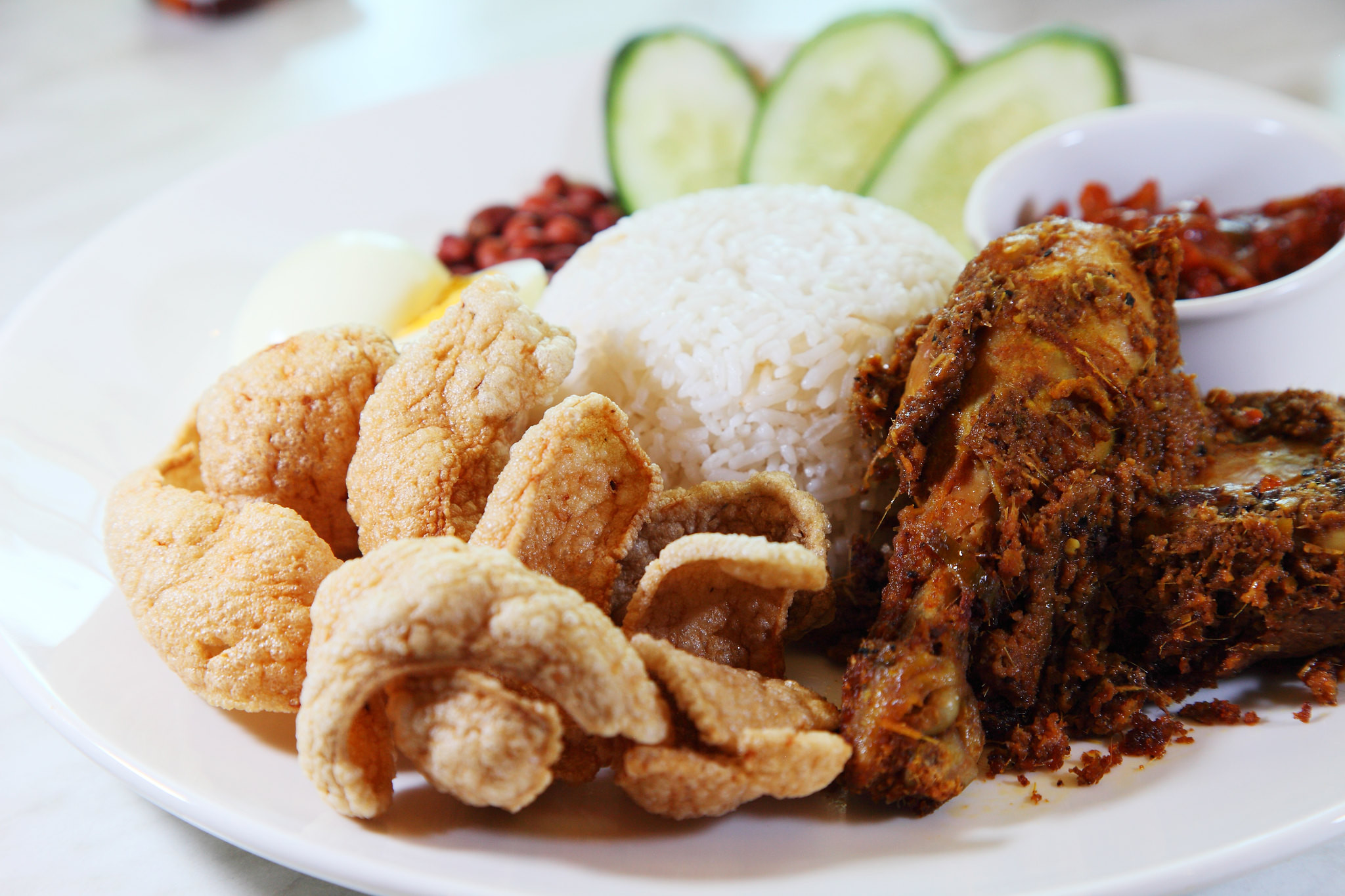 (Image source: flickr)
(Image source: flickr)
Nasi Goreng
Fried rice has always been a very popular dish in the Malay world. Rice, vegetables, meat, and seafood can be combined in any way and it will taste delicious. Similar to Indonesian fried rice, Malaysian fried rice uses sweet soy sauce or shrimp paste, adding a touch of sweetness and umami to the dish.
There are many different types of fried rice in Malaysia, and here are a few unique styles. Of course, if you visit Malaysia, you will definitely encounter more unexpected combinations.
Nasi Goreng Mamak
Whenever you see the word "mamak," it indicates that this delicacy is from the hands of the South Indian Muslims. In addition to using Halal ingredients, the aroma of this dish is also appetizing. Mamak fried rice ingredients include tofu and fish cakes, and in addition to chili sauce, seasoning powder from Maggi curry-flavored noodles is added, which is the core of the overall taste. Some shops also add a fried egg on top of the rice.
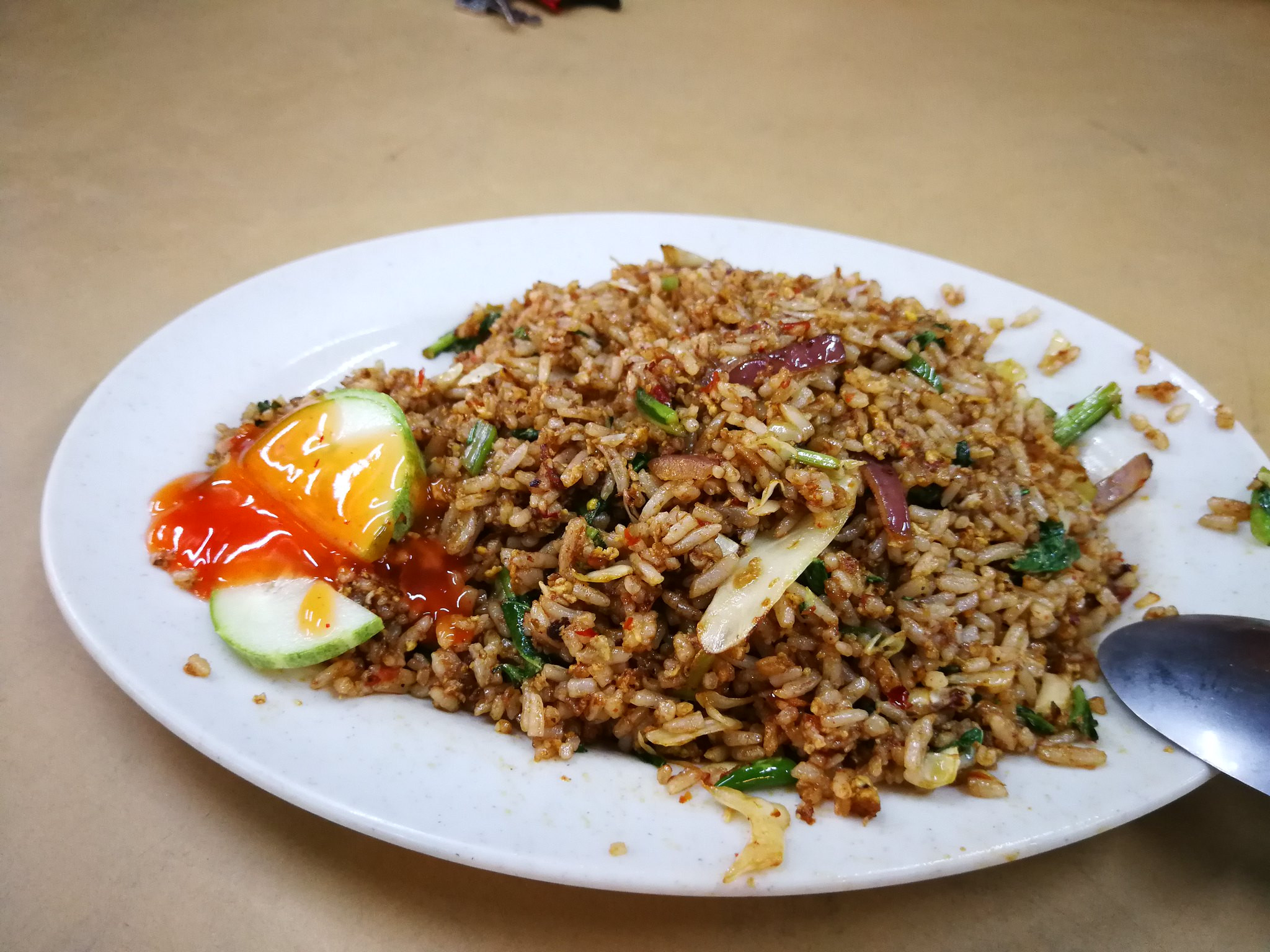 (Image source: flickr)
(Image source: flickr)
Nasi Goreng Kampung
"Kampung" refers to the indigenous rural villages in Malaysia and Singapore. In addition to onions, shallots, and garlic, Kampung fried rice also uses bird's eye chili, water spinach, shrimp paste, and dried fish for stir-frying. Kampung fried rice does not use eggs, but it is served with cucumbers or tomatoes on the side. Before serving, small dried fish is sprinkled on top of the fried rice.
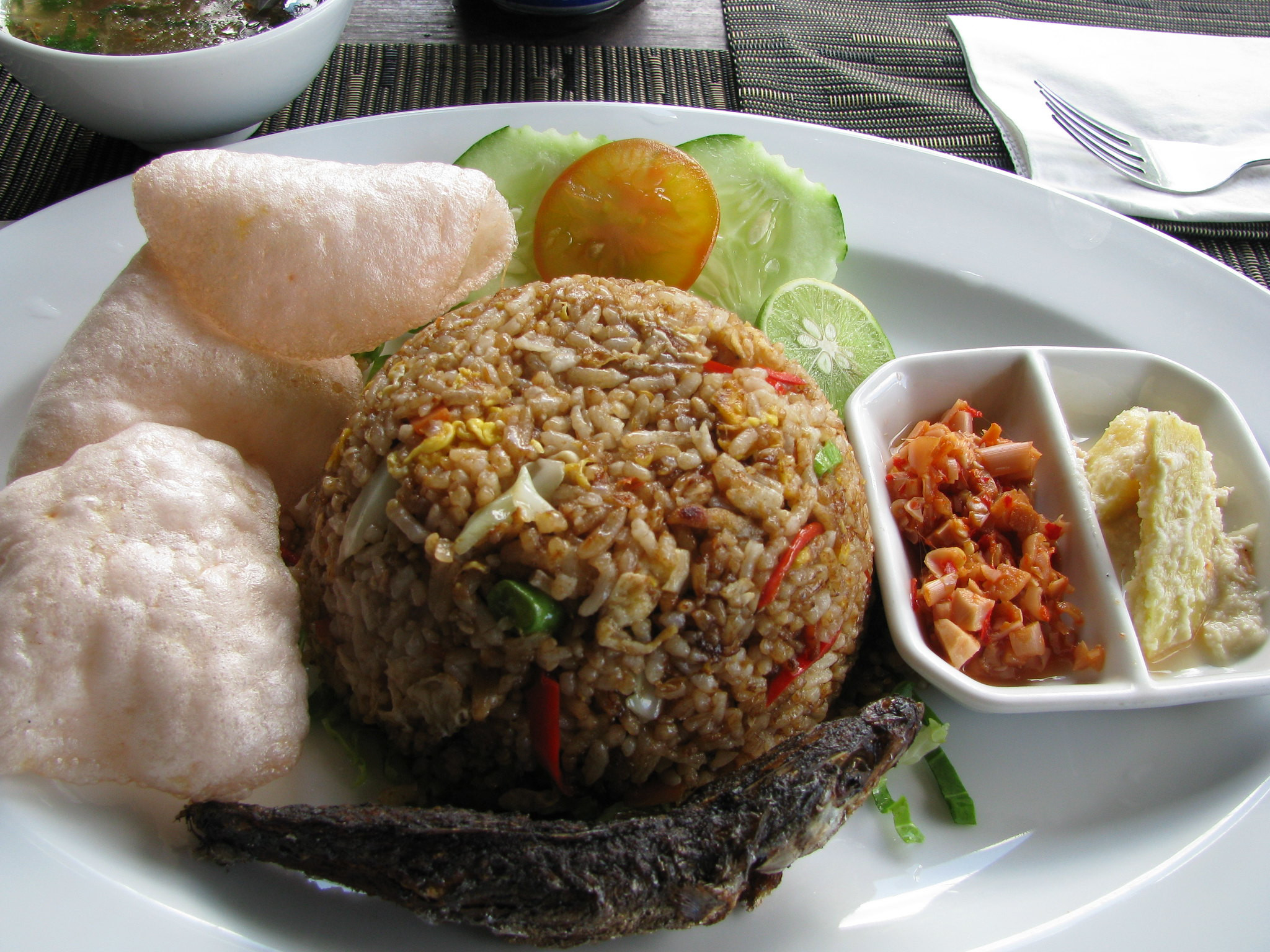 (Image source: flickr)
(Image source: flickr)
Nasi Goreng Pattaya
The highlight of this fried rice dish is not the seasoning, but the presentation: the fried rice is wrapped in a thin egg skin, and when it's time to eat, it's flipped open, giving a surprise feeling like opening a gift. Pattaya fried rice is often served with cucumber, and the egg wrap is also topped with chili sauce. Although it's called "Pattaya," it has nothing to do with Thailand and is 100% Malaysian cuisine.
(Image source: Wikimedia Commons)
Nasi Goreng USA
This dish, like the previous one, has no direct relation to the United States. The “USA” in American fried rice actually stands for the abbreviations of three ingredients: udang (prawns), sotong (squid), and ayam (chicken). These ingredients were once considered symbols of luxury, but nowadays, chicken and beef are commonly used in American fried rice. The dish is stir-fried with red sauce, and after being plated, it is topped with chicken or beef and vegetables stewed in meat juice. Finally, a fried egg is added on top.
Additionally, there is also “American fried rice” in Thailand. Although the two dishes are not related, they are both authentic dishes named after foreign countries.
Nasi Kandar
If you travel to Penang, you must try the local dish called Nasi Kandar! In the past, street vendors would carry their food on a pole and sell it to coolies at the port, which is how it got its name. Nasi Kandar is simply rice (either plain or slightly seasoned) served with South Indian curry and cooked vegetables.
The curry comes in various types such as chicken, beef, lamb, and fish, with a wide range of cooked vegetables for you to choose from. When you first visit a Nasi Kandar restaurant, it's easy to get stunned by the variety of dishes. One plate of curry may contain two or more types of curry; even if it's only one type, the broth from other ingredients will also affect the overall taste. It is a diverse mix of flavors that will astonish your taste buds, both in terms of presentation and taste.
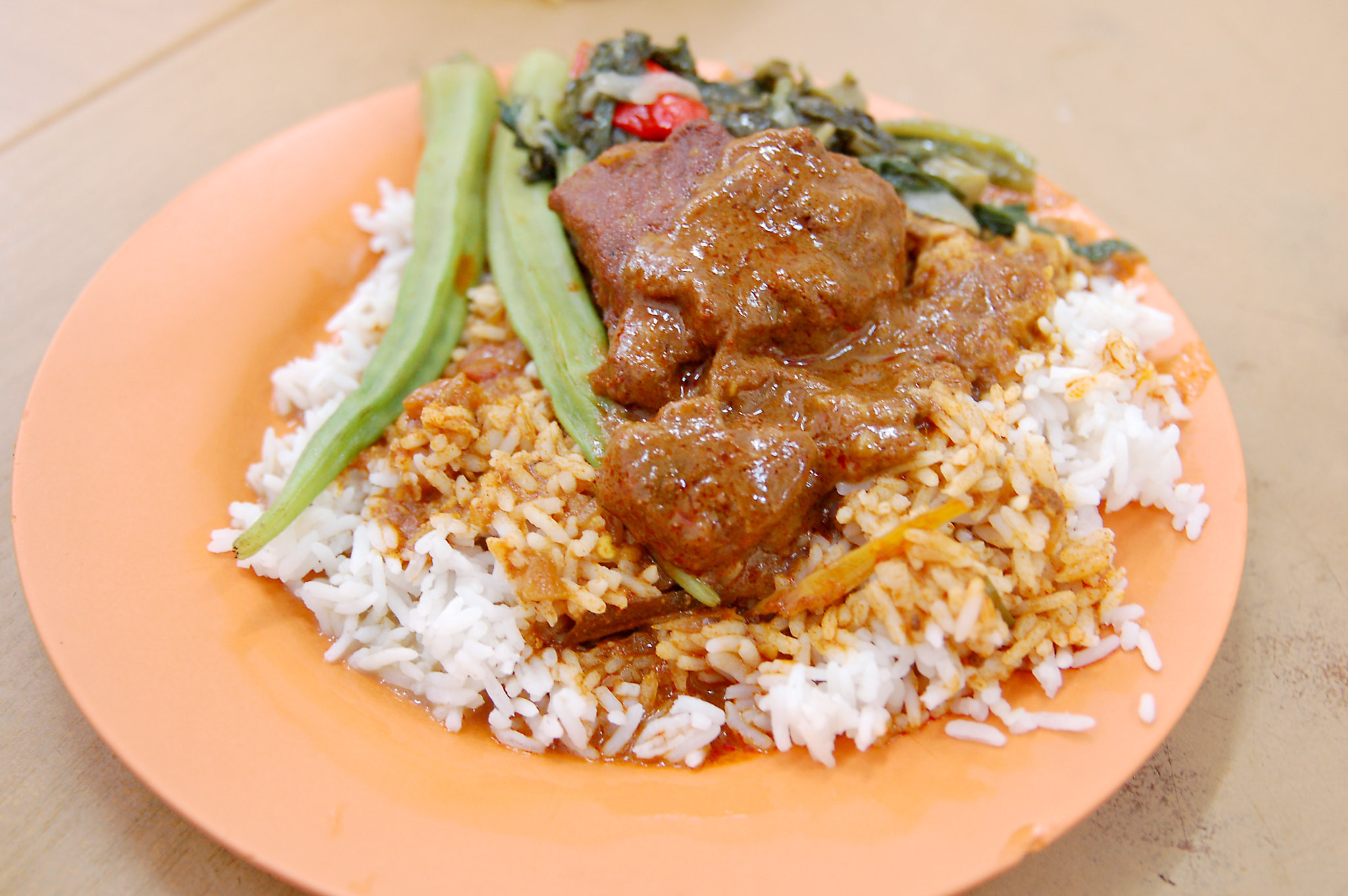 (Image source: flickr)
(Image source: flickr)
Nasi Padang
This dish is actually the most celebrated Indonesian cuisine “Nasi Padang”. Similar to Nasi Kandar mentioned earlier, nasi padang has a variety of pre-cooked dishes to choose from, which may be served separately or all in one plate. Common side dishes found in Malay rice stalls include coconut milk curry (Gulai), fried eggplants, rendang curry, braised jackfruit, and grilled fish. Last but not least, don't forget a spoonful of appetizing sambal sauce.
One difference between nasi padang from Malaysia and Indonesia is the ordering method. In Indonesia, nasi padang is usually served as a fixed set of dishes, while in Malaysia, customers can pick and choose the dishes they want to have on their rice, and the stall owner will add them one by one.
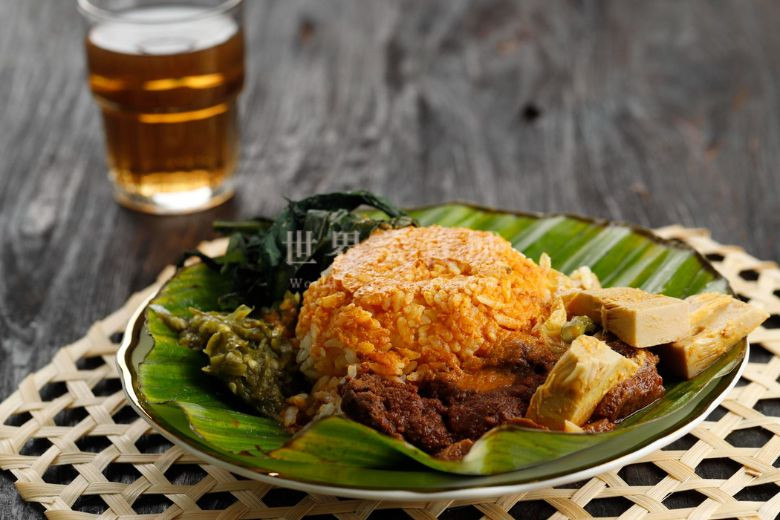
Nasi Kukus
Originating from the east coast of the Malaysian Peninsula, nasi kukus gained its fame in Klang. To make nasi kukus, white rice is steamed in small aluminum cans. The common side dishes of nasi kukus are similar to nasi lemak. Cucumber and sambal sauce are essential, and the main dishes usually use Malay spiced chicken (ayam goreng berempah) or Northern Malay stewed meat (gulai daging utara), both of which use rich spices to create unforgettable flavors.
If you want to try the most authentic nasi kukus, click here to learn more:【MY】Warisan Nasi Kukus
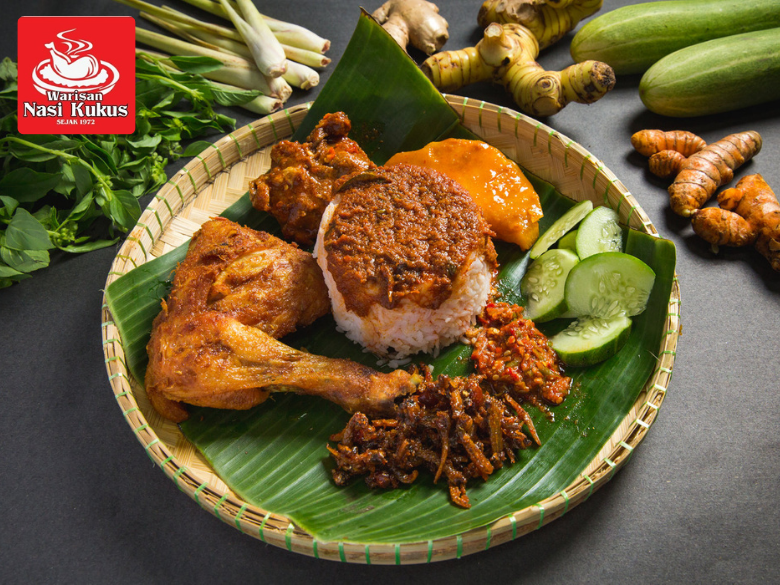 (Image source: Warisan Nasi Kukus)
(Image source: Warisan Nasi Kukus)
Nasi Briyani
Nasi briyani originated from the Middle East. In addition to being a common dish in West Asia during Ramadan, it is also a delicious cuisine found throughout South Asia and Southeast Asia. The spices originally used for cooking meat and the sautéed sauce are cooked together with rice, and the broth is perfectly locked into the rice.
The rice is soft and fragrant, and the chicken, beef, or lamb cooked with the rice become very tender. Every bite will bring you the unforgettable flavor of the spices.
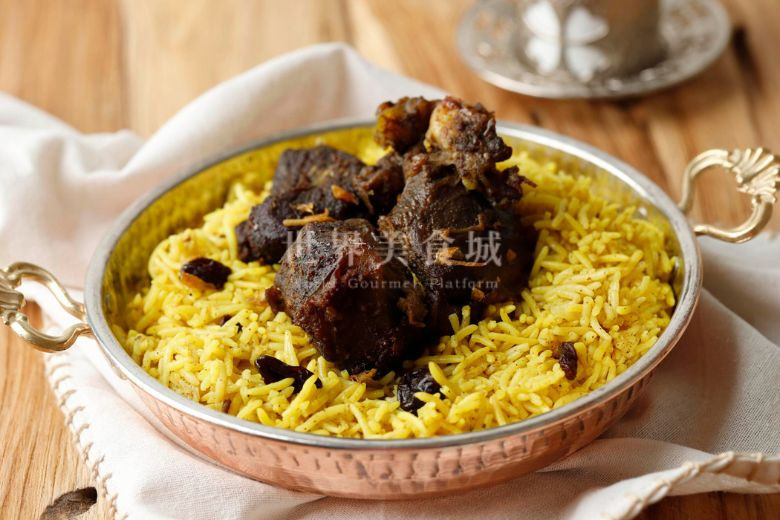
Nasi Ambang
Indonesia is adjacent to Malaysia, so their food cultures have mutually influenced each other over a long period of time. Nasi Ambeng is one example of this influence. Nasi Ambeng is a popular Javanese dish in Indonesia that has become common among the Javanese community in the state of Selangor and Johor in Malaysia. This dish is often seen during festive occasions.
A standard Nasi Ambeng meal consists of rice, fried tempeh, crispy fried peanuts (Rempeyek), beef or chicken rendang, and fried sambal. Of course, as the style has evolved, this rice and four dishes combination has many more options. Even fried noodles can be served as a side dish!
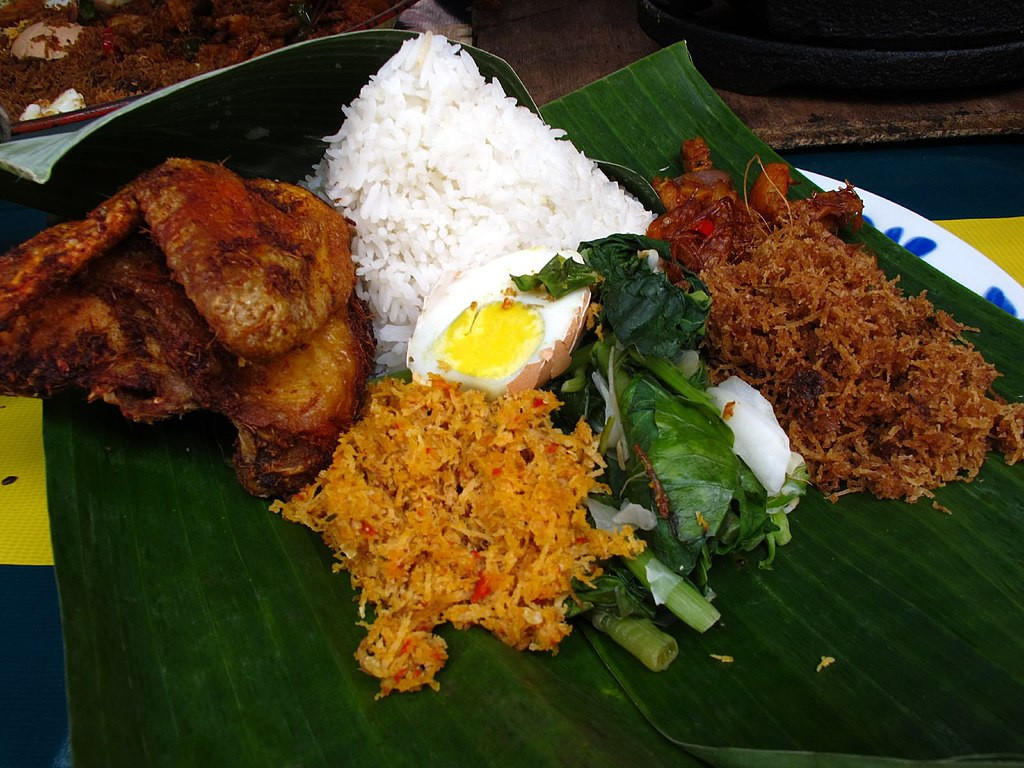 (Image source: Wikimedia Commons)
(Image source: Wikimedia Commons)
Endless Surprise of “Nasi”
From the dishes introduced above, one can occasionally see the influence of Indian, Indonesian, and Middle Eastern culinary cultures, which is enough to depict the colorful background of Malaysia's immigration history. Each dish has its own unique story, and one can taste different flavors of Southeast Asian from them.
The Chinese community has also made significant contributions to Malaysian cuisine. Hainanese chicken rice, which is popular throughout Malaysia and Singapore, has its own legendary story. Click the link below to learn more!

